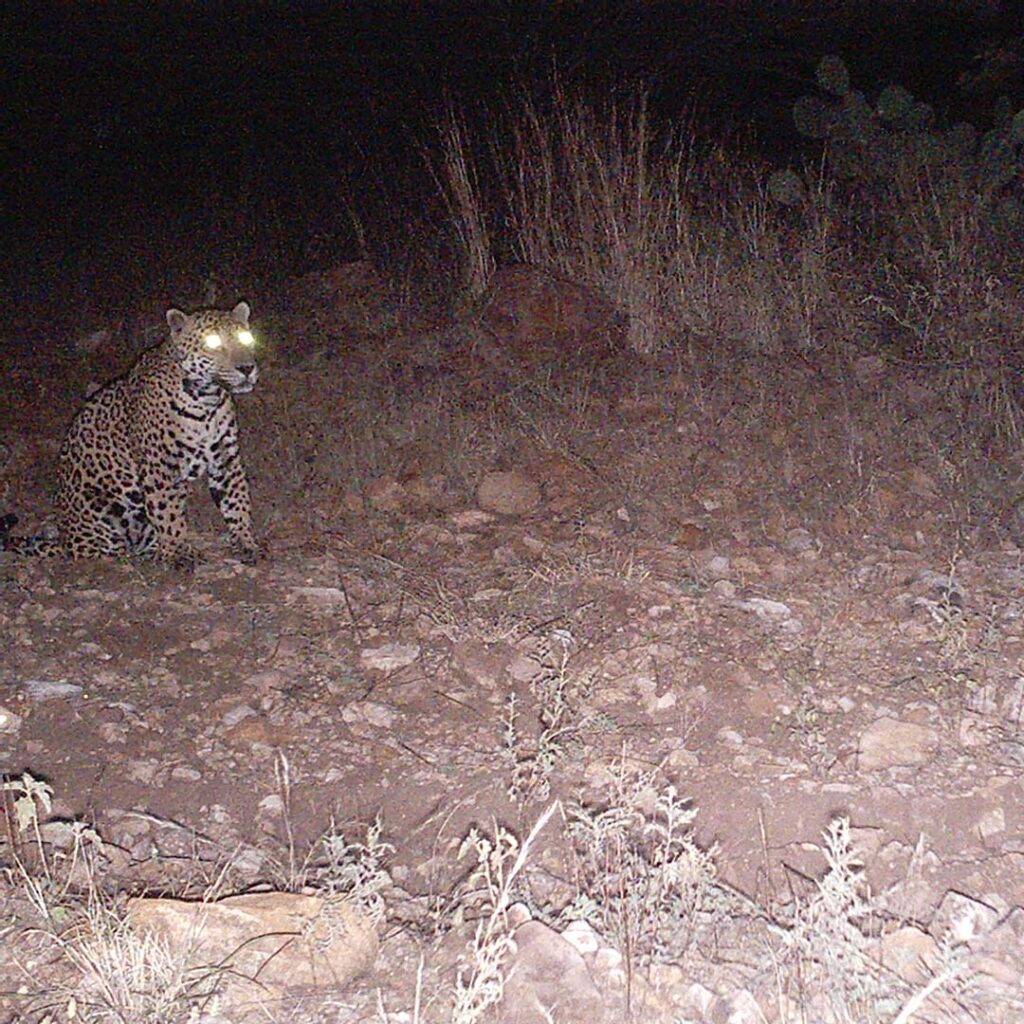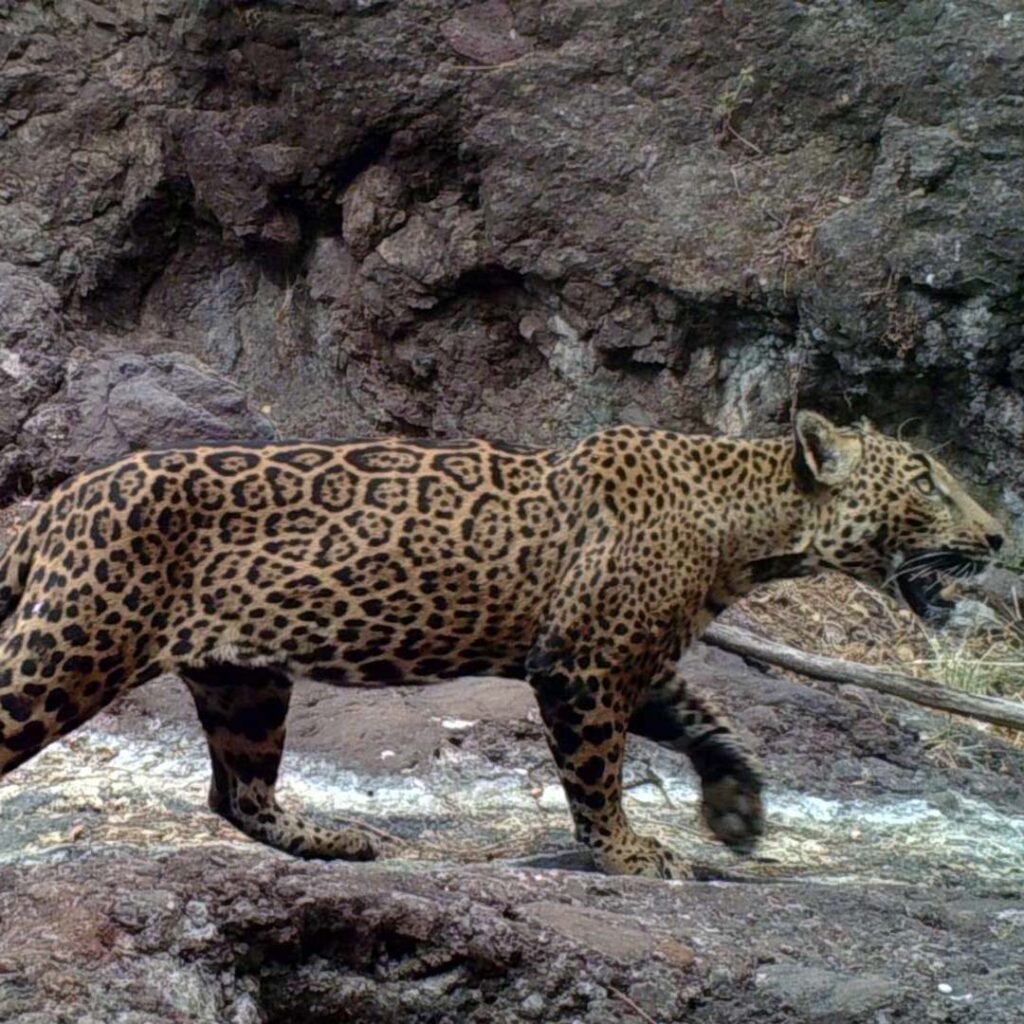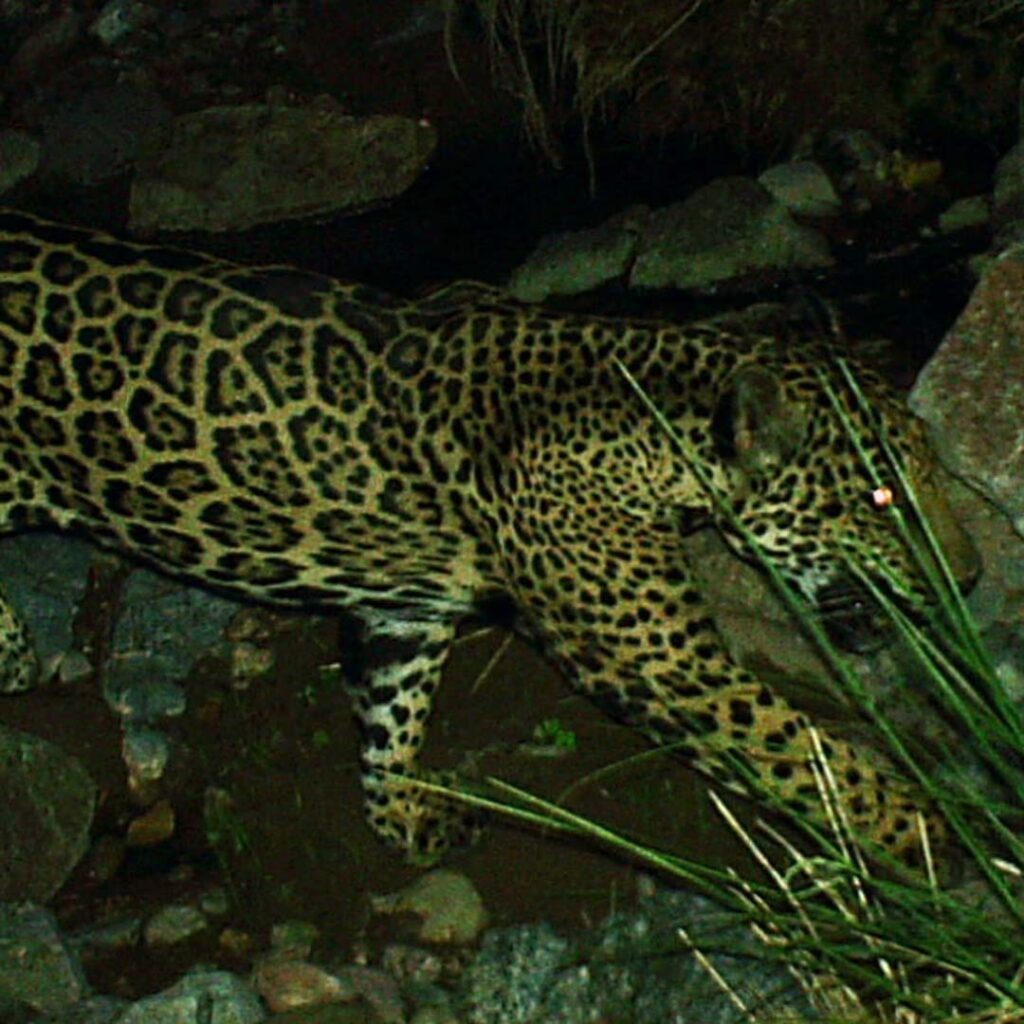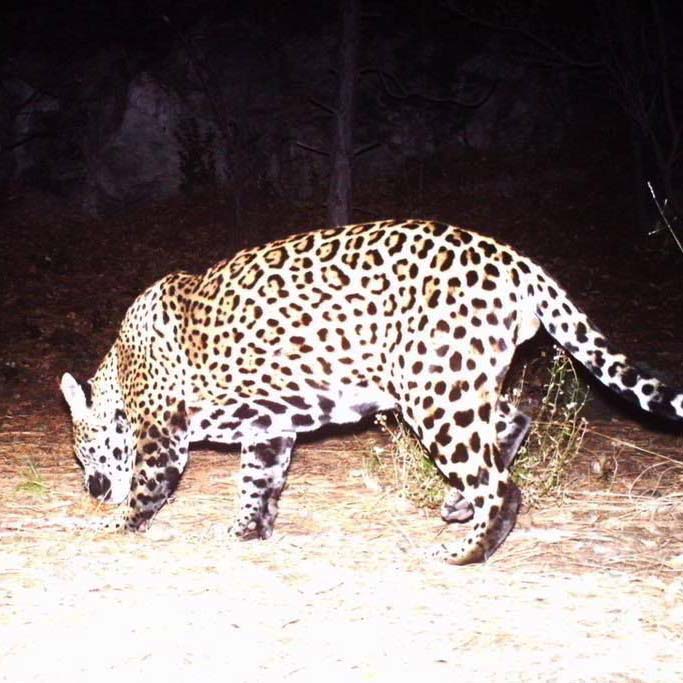Guest Blog by Dr. Carmina E. Gutiérrez González
The jaguar is such an imposing, beautiful, and important species that it’s an honor to be part of projects that support its conservation. I’ve been working with jaguars in one way or another for almost 16 years. During my professional training as a biologist, I never imagined that I would end up studying mammals, let alone jaguars. I was very determined to be a microbiologist and, thanks to my teachers, who were obviously wiser than me, little by little I got to know the world of mammals, especially carnivores, and fate led me to work in the Sierra de Bacatete in Sonora where we helped obtain the first photos of jaguars with remote cameras back in 2008.
It was there that I had my first contact with staff from the Northern Jaguar Project. I began to work with them as a field biologist, checking cameras and looking to obtain photos of jaguars. Shortly after, we began to identify the individuals that appeared in the photos, and we saw that there were individuals that had been in the area for years. The most natural thing for us was to name them for easier ID. So we started giving them names like “Perrito” for a jaguar that appeared in a photo sitting like a dog waiting for orders from its owner, or “Corazón” for a female because she had a small heart-shaped spot on her left arm.
The names are now assigned by people who support jaguar conservation or by ranchers in the region, but the names still help us to easily identify the individuals. Currently, I’m the research coordinator for the Northern Jaguar Project, and I also have the honor of being part of the board of directors for Sky Island Alliance, a group that’s doing great work to protect the habitat, not only of the jaguar, but of all the wild species that inhabit the Sky Islands, both in Mexico and the United States.
Over the years, and through getting to know more organizations dedicated to jaguar conservation, we learned that other researchers also named their jaguars, and some have even given us their trust and shared their photos with us. I have no words to explain the emotion I feel every time I receive a photo from a partner outside the Northern Jaguar Project reserve, and I see that it’s a match between individuals. So far we haven’t been lucky enough to identify any of “our jaguars” at other sites, but we have identified jaguars from “other sites” that have visited our reserve or are shared between different projects.
One highly publicized case was the identification of El Jefe, a jaguar of enormous importance in the United States that I had the honor of identifying when it was detected in central Sonora in 2021 thanks to a collaborative project between several organizations to monitor jaguars.
But not all is joy. In 2018, I also had the misfortune of being the one to identify the photo of Yo’oko when he was hunted in Mexico. But thankfully, the need to identify skins has only occasionally come my way, and for the most part, there have been no matches with individuals we’ve been tracking.
This gives us hope, knowing that there are still different jaguars moving freely in the northern part of their range, where the conditions aren’t easy. But it also shows that we still have a lot of land to study, to know where all those individuals are that were never seen again. We need more people, more monitoring, more protected area, more collaboration between organizations, and a lot of work with the communities. We are currently organizing our priorities for future projects, while still making room of course for the preparation of data to analyze the more than 24 years of jaguar detections that we have.
Finally, I can only thank the organizations and people who have given me their trust over these years, either by sharing their photos of jaguars, collaborating on projects, inviting me to be part of their organizations, and even donating to support conservation. ¡Mil gracias a todos!
Dr. Carmina E. Gutiérrez González is the research coordinator for the Northern Jaguar Project in Sonora and a member of Sky Island Alliance’s board of directors.






